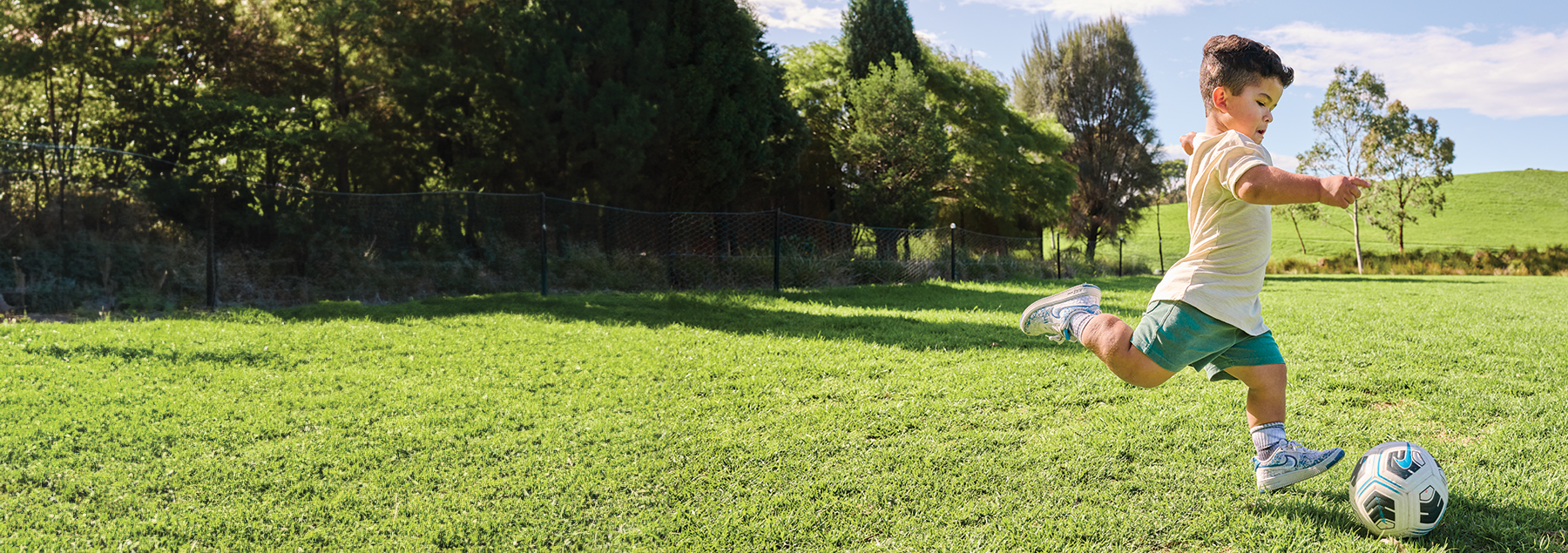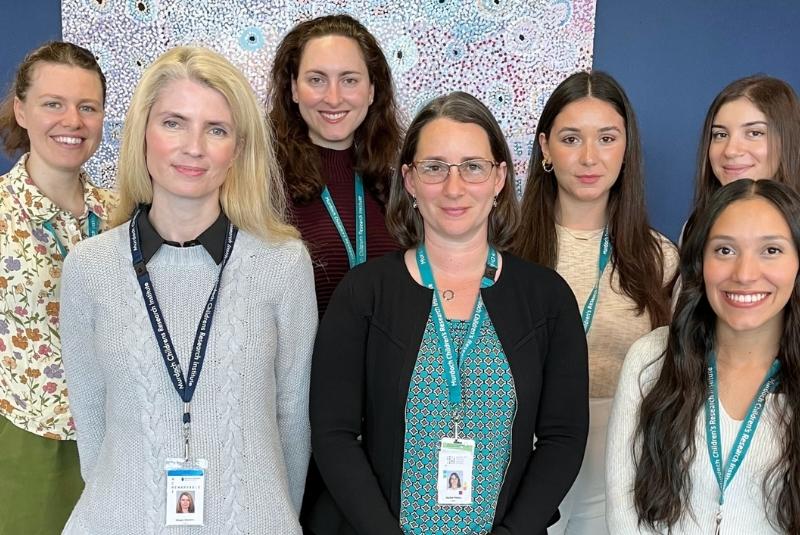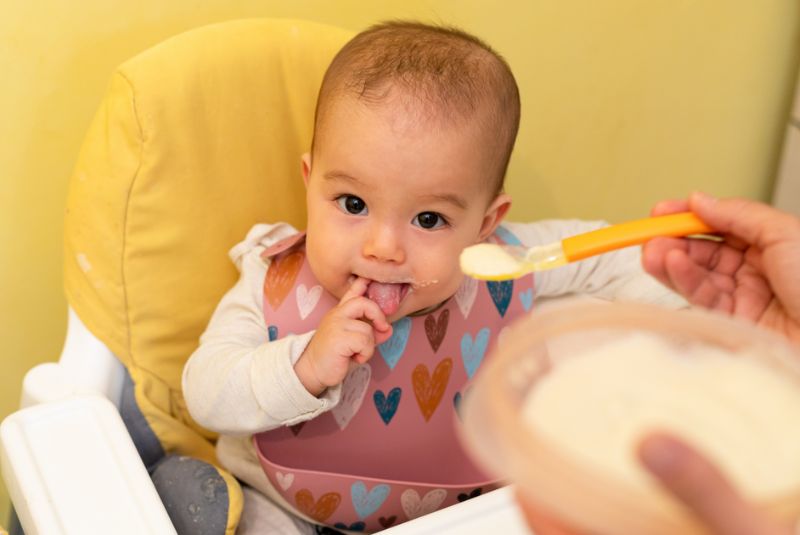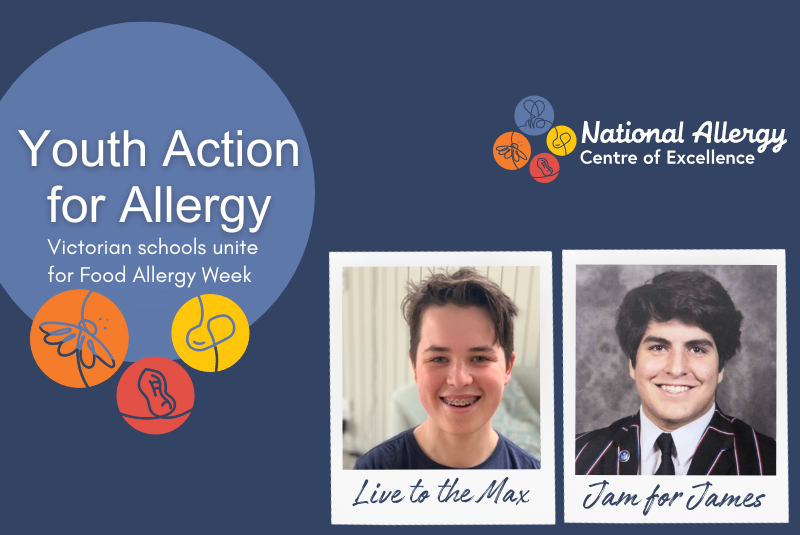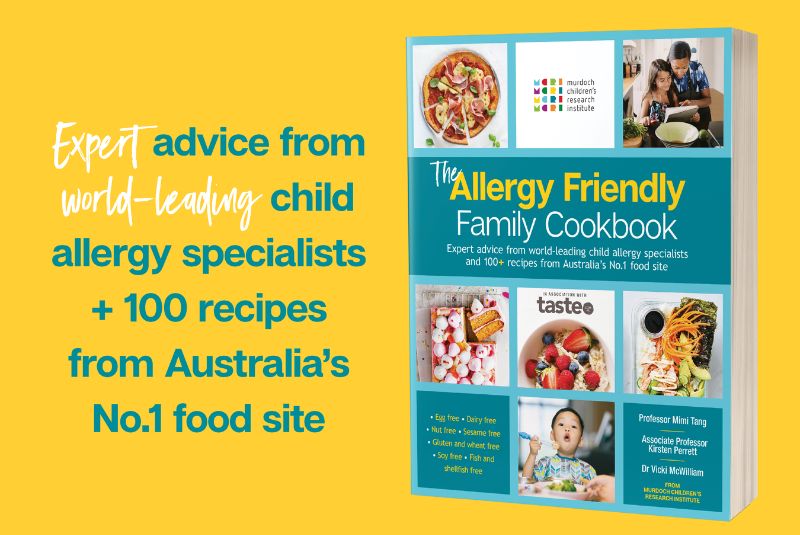Food allergies in children are on the rise worldwide, with symptoms ranging from mild skin rash to life-threatening anaphylaxis.
Australia has the highest reported rates of childhood food allergy in the world.
Watch as Flynn asks Professor Kirsten Perrett about food allergy research.
Watch as Flynn asks Professor Kirsten Perrett about food allergy research.

Food allergy facts
In food allergy, the immune system incorrectly identifies the specific food as a threat when entering the body.
Some food allergy symptoms are mild but severe symptoms like breathing difficulties (anaphylaxis) can be life-threatening. Mild reactions are usually indicated by mild skin rash (food allergy hives), face swelling, vomiting and tummy pain. Severe reactions such as potentially fatal anaphylaxis, are indicated by noisy or difficulty breathing, persistent coughing, voice change, going pale and floppy or collapsing.
Over 90 per cent of childhood food allergies in Australia are to egg, milk, peanut, tree nuts, wheat, soy, fish or shellfish.
Most resolve during primary school but food allergies to peanut, tree nuts, fish and shellfish are more likely lifelong. Peanut allergy is the most common cause of anaphylaxis.
*Seek medical advice if worried that your child has a food allergy.

Who does it affect?
Who does it affect?
- Australia has the highest reported rates of childhood food allergy in the world.
- One in 10 babies and one in 20 primary school-aged children have a food allergy.
- On average, one child in every classroom will have a food allergy.
- Over the past two decades, admission to hospital with severe food allergy reactions (anaphylaxis) in Australia has increased by more than 350 per cent. Admissions for peanut anaphylaxis have also increased dramatically.
Watch as Professor Perrett discusses the risk factors for developing food allergy on ABC News 2024.
Professor Kirsten Perrett is the leader of the Population Allergy group at Murdoch Children’s Research Institute (MCRI) and the Director of the National Allergy Centre of Excellence (NACE) and the Centre for Food & Allergy Research (CFAR).
Our food allergy research
Our food allergy research
Australia has a food allergy crisis impacting 10 per cent of infants, but critical research is underway. MCRI has recruited over 21,300 participants since 2007, across more than 15 projects that investigate 12 allergies impacting children and their families.
MCRI’s Population Allergy group hosts the National Allergy Centre of Excellence (NACE) which is funded by the Department of Health and Aged Care and the Centre for Food & Allergy Research (CFAR), which has been funded by the National Health and Medical Research Council since 2013. Through this we aim to unite allergy experts from across Australia and accelerate allergy research.
Our large population-based studies, HealthNuts, EarlyNuts and SchoolNuts, involve over 16,000 children. These studies have helped to understand the risk factors and consequences of childhood food allergy, plus informed changes to food allergy prevention, diagnosis and management. They have led to large-scale clinical trials of new food allergy prevention strategies. Research on data and samples from these cohorts is ongoing to develop safer diagnostics and improve management for children and adolescents living with food allergy and their families.
Our Allergy Immunology group focuses on the causes of food allergies, plus identifying and evaluating new treatments to induce clinical remission (sustained unresponsiveness). Trials include comparing peanut immunotherapy alone with combined therapy and studying cell changes associated with long-lasting versus short-lived remission. We are also studying the effects of treatment on quality of life and comparing the benefits associated with remission versus desensitisation.
Learn more
What you need to know about new treatments for children with peanut allergies - Pursuit - The University of Melbourne - Professor Mimi Tang
To find out more about ongoing allergy research trials in Australia, check out the NACE Allergy Studies Directory.
Population-based cohorts studies:
Food allergy prevention clinical trials:
- Allergic Disease Onset Prevention Study (ADORED) – Siolta Therapeutics
- OPTIMUM
- PEBBLES
- PrEggNut Study
- VITALITY Trial
Food allergy early intervention/treatment clinical trials:
Impacts of our research
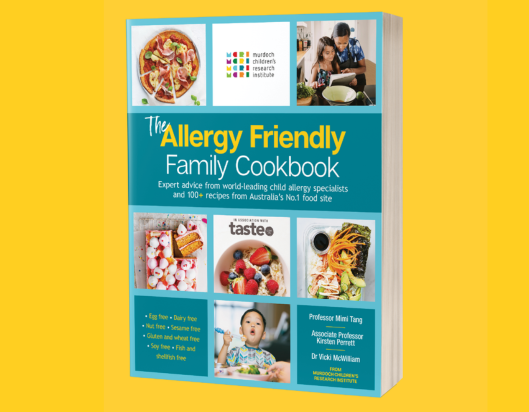
Impacts of our research
- MCRI launched The Allergy Friendly Family Cookbook in association with Harper Collins Publishers Australia, News Corp Australia and Taste in March 2023. Developed with expertise provided by our world-leading allergy researchers and paediatric specialists – Professor Kirsten Perrett, Professor Mimi Tang and Dr Vicki McWilliam – the Cookbook includes more than 100 allergy friendly recipes and evidence-based advice for families.
- Our team was the first to confirm Australia’s rising food allergy epidemic through our HealthNuts study which also revealed which children were at the highest risk of developing food allergy. The study tested 5,300 babies, checking every few years for allergy development and investigated links with hay fever, eczema and asthma.
- We led an Australian consensus on infant feeding guidelines to prevent food allergy. Our EarlyNuts study found 88 per cent of parents are following these recommendations to introduce peanut to babies in their first year of life. The recommendations have been adopted internationally and have led to a 16 per cent drop in peanut allergy among Melbourne infants.
- Our research has helped Australian families introduce certain foods early to reduce their child's risk of developing allergies.
- Our pioneering high-dose, rapid-escalation peanut oral immunotherapy re-trains the immune system to divert from an allergy response to a tolerance response. The latest trial found that both the peanut oral immunotherapy on its own and a combination treatment comprising a probiotic plus peanut oral immunotherapy were highly effective at inducing remission. After 18 months of treatment, about half of the children who received either treatment achieved remission. This allowed them to stop treatment and safely eat peanuts with 99 per cent of them remaining in remission a year later.
- A further 23 per cent of children were desensitised, meaning they are protected from exposure to approximately a standard serving of peanut (for example, a snack pack of peanut m&m’s). However, they needed to continue treatment. Adding the probiotic reduced gastrointestinal side effects but did not improve the chances of achieving remission. The trial backed previous research which showed high remission rates that persisted out to four years after stopping combination treatment.
Explore the links between allergy and asthma
MCRI Associate Professor Rachel Peters speaks about links between allergy and asthma with MCRI patient Zane Slater and his father Lee.
Our vision
Our vision
Our vision is to change the trajectory of allergic disease. To give every child the opportunity to go to school safely and inform the best care for people living with allergies. Our focus is on implementing strategies that prevent food allergies from developing, identifying early interventions to reduce the number of food allergies and offering children and adolescents treatments that induce remission of allergy. This will free millions from the burden of food avoidance and improve their quality of life.
Where to next?
Where to next?
The Population Allergy group will continue working towards reducing the prevalence of childhood food allergy through improved prevention and early intervention. To prevent the current 10 per cent of infants from developing food allergy, and for those that we can’t prevent, we will help implement early precision intervention to give each child the best chance of living without a food allergy.
We will do this by generating, translating and evaluating new knowledge about novel strategies and early targeted interventions to prevent and treat young children with food allergy. For children and teenagers currently living with food allergy, we will focus on reducing harm by identifying and implementing strategies to prevent adverse reactions to foods.
The group will also continue to host national research collaborations, the NACE and CFAR, to fast-track the start-up of allergy clinical trials. We will give Australians access to the latest research and cutting-edge treatment options, harness the power of big data analysis through a National Allergy BioRepository, lead a series of living evidence collections to seamlessly connect evidence and practice and train the next generation of allergy researchers.
The Allergy Immunology group plans to develop the peanut oral immunotherapy treatment commercially through Prota Therapeutics – a biotech start-up established at MCRI. This way, children allergic to peanuts can be freed from the burden of living with their allergy.
We will try to determine whether our oral immunotherapy approach can be applied to other food allergies. We will also examine whether clinical remission and desensitisation are long-lasting, plus assess the long-term impact of treatment on quality of life and the risks and benefits of remission compared with desensitisation in the real world.
Donate to MCRI
Help our researchers make life-changing discoveries in child health.

